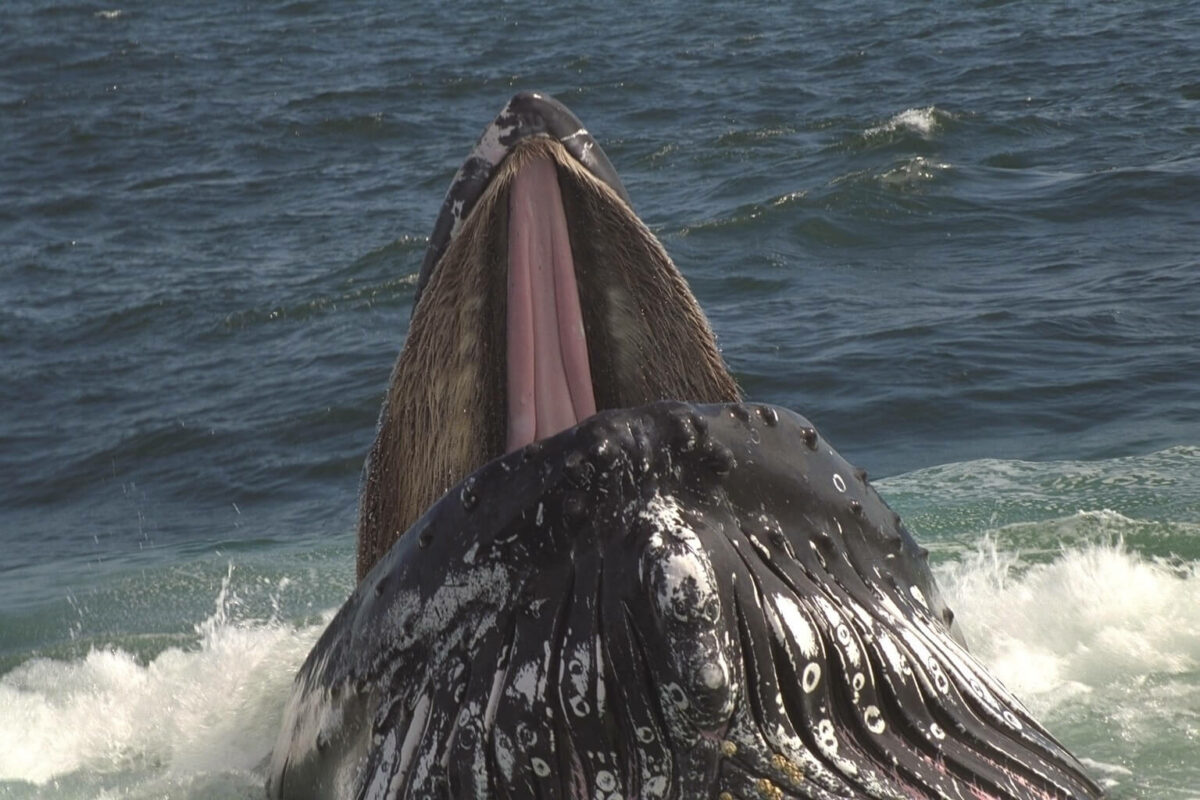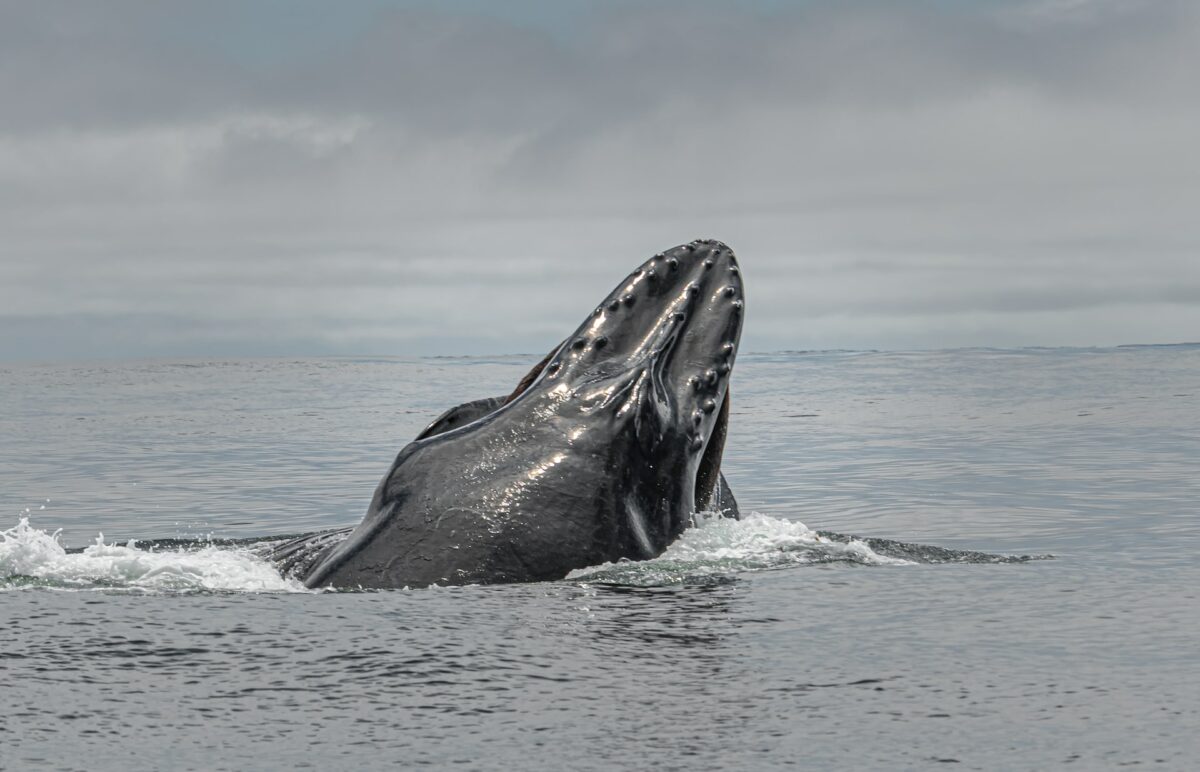Have you ever looked out into the ocean and wondered what some of the largest animals to have ever roamed the earth eat?
You wouldn’t be the first. Whales have fascinated humans for centuries and their diets have long been the topic of discussion for those curious about these animals.
Despite their enormous size, whales feed on some of the smallest organisms in the ocean as they’re able to eat tonnes every single day.
In this post, we’re going to take a closer look at the diet of whales and answer a question that often comes up when discussing these gentle giants. Do whales eat plankton?
If this question has ever crossed your mind, stick around as by the end of this article you’ll know everything there is about whales and their preferred food sources.
Do Whales Eat Plankton?
YES, whales do eat plankton. In fact, plankton is a significant part of many whales’ diets, these whales are known as baleen whales as they have a filtering system in their mouths called baleen.
Blue whales, humpback whales, gray whales, and more are baleen whales that feed on a variety of small organisms such as krill, squid, small fish, and plankton.

Their baleen plates hang down from their upper mandibles and work by trapping the small creatures in their mouths whilst the whale gobbles up mouthfuls of water and prey.
Baleen whales consume large amounts of plankton every single day as it makes up a large part of their diets and provides them with the vital energy they need to survive in the ocean.
Blue whales, the largest animal to have ever lived can consume up to 16 tonnes of plankton in a single day.
Why Do Whales Eat Plankton?
Whales eat plankton because it’s one of the most abundant food sources in the ocean that can be found everywhere, often floating near the surface where sunlight penetrates the water.
Plankton is a very reliable food source for whales because it’s rich in protein and essential nutrients that the whale needs to survive.
Many whales migrate to the Arctic in the summer months where plankton is so abundant that aquatic animals from all over the world travel there.
Plankton, krill, squid, and small fish thrive in the polar region during the summer months, so many whales will travel thousands of miles to take advantage of the rich feeding grounds.
Baleen whales have evolved over millions of years to feed on plankton as well as other small crustaceans.
Their baleen plates are perfect for trapping these tiny critters and it means that they can gobble up large amounts of plankton without using much energy.
Whales are ENORMOUS marine mammals that don’t want to spend their time swimming after fish in the hopes of a tiny snack.
Instead, they swim gracefully through giant swarms of zooplankton with their mouths wide open which allows them to eat as much as 4400 – 5500 pounds of plankton each day.
This is a much more efficient way of feeding for these whales and allows them to conserve energy.
Which Whales Eat Plankton?
ALL baleen whales eat plankton simply due to the fact that they’ve evolved to do so and plankton are so abundant in the oceans of the world.
Eating one fish at a time is not an effective way to feed the largest whales on earth, so eating plankton allows them to consume massive quantities without exerting much energy.
Baleen whales are able to take in much more energy/calories than many other marine animals because of the way they feed.
Below are some of the whale species that feed on plankton:
- Humpback whales
- Blue whales
- Gray whales
- Fin whales
- Sei whales
- Minke whales
- Right whales
- Bowhead whales
How Often Do Whales Eat Plankton?
Baleen whales that feed on plankton as a primary food source feed on plankton EVERY DAY, with most feeding twice a day to sustain their massive bodies.
They need to be able to consume enough food in order to have the energy to survive, with the exact frequency of eating depending largely on the species.
If plankton is abundant in their waters, they will take advantage of this and feed as frequently as possible.
But sometimes whales may not feed at all, which is quite common when they make the months-long migration to their feeding grounds in the Arctic.
Once they reach their feeding grounds, they will eat as much plankton as possible to fatten up ready for the migration back to their breeding grounds.
For some species such as the gray whale, this can look like non-stop eating for up to 18 hours a day and gaining about 16 to 30% of their total body weight during the feeding season.
What Do Whales Eat Beside Plankton?
Baleen whales don’t just eat plankton, they also feed on a variety of other crustaceans which includes small fish, krill, algae, and squid.
They need to feed on small organisms as that’s what their baleen plates are for, so they are unable to eat large fish or hunt marine mammals like some other whale species.

In general, baleen whales consume large quantities of tiny prey every single day using their baleen plates to filter out and consume their prey efficiently.
Wrapping Up
To sum up, YES, whales do eat plankton and LOTS of it. Plankton is a primary food source for all baleen whales simply due to the abundance of plankton in the ocean.
Baleen whales have a special adaptation known as baleen plates that allows them to trap and sieve out plankton without exerting much energy.
It’s an incredibly efficient way for these whales to feed and allows them to eat as much as 5,500 pounds of plankton every day, providing them with the energy they need to survive.
Whilst plankton isn’t the only food source that baleen whales feed on, it’s certainly a main one alongside krill and shrimp.
Thanks for taking the time to read this post today and learn more about whales and their fascinating diets.
See you in the next one!

Hi, I’m George – the founder of MarinePatch. I created this blog as marine wildlife has been my passion for many years. I’ve spent over a decade in the marine wildlife industry and spent years out in the field conducting research. In today’s modern world, an online blog is the best place for me to share my findings and reach as many people as possible to help educate and inspire others. Enjoy your time here and you’re welcome back anytime!

